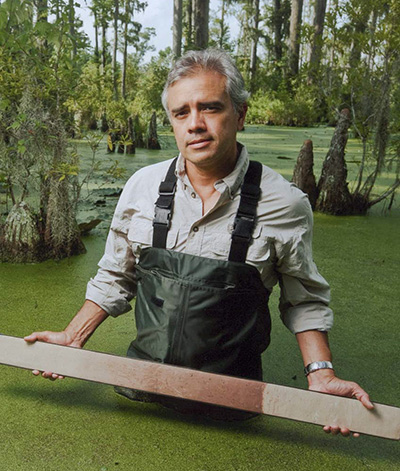James Zachos, professor of Earth and planetary sciences at UC Santa Cruz, will receive the 2016 Milutin Milankovic Medal from the European Geosciences Union.
The award recognizes Zachos "for his groundbreaking contributions to documenting and understanding climate change throughout the Cenozoic." He will give the Milankovic Medal Lecture at the EGU General Assembly 2016 in Vienna, Austria, in April.
Throughout his career, Zachos has been at the forefront of the fields of paleoclimatology and paleoceanography, working to understand the climates and marine environments of Earth's distant past. Layers of sediments deposited on the ocean floor hold evidence of past conditions, and Zachos has led studies of these clues that have reshaped scientists' views of long-term climate change and rapid climate transitions during the past 65 million years.
Global warming
In the early 1990s, Zachos was among the first to recognize the importance of a rapid episode of global warming now called the Paleocene-Eocene Thermal Maximum (PETM). As the chief scientist on an Ocean Drilling Program expedition (ODP Leg 208) and lead author of a 2005 Science paper, he showed how deep-sea carbonate dissolution was influenced by a massive carbon release during the PETM. This work is highly relevant to understanding how human activities are driving modern-day global climate change.
Early in his career, Zachos contributed significantly to the understanding of the oceanic carbon cycle in the aftermath of a mass extinction event at the end of the Cretaceous period 65.5 million years ago. His work on Antarctic glaciation across the Eocene-Oligocene transition and its effect on climate and the global carbon cycle resulted in landmark papers.
Zachos is also known for his work on climate change throughout the Cenozoic era, exemplified by an iconic graph of stable isotope measurements now known as the "Zachos curve." His high-resolution measurements enabled detailed studies of the relationship between climate cycles and variations in Earth's orbit around the sun. Astrophysicist Milutin Milankovic (for whom the Milankovic Medal is named) first proposed this relationship in the 1920s.
"Through several ground-breaking contributions, Zachos fundamentally transformed our understanding of climate change throughout the Cenozoic and made a sustained impact within, and far beyond, the boundaries of palaeoceanography," stated an EGU announcement of the award.



